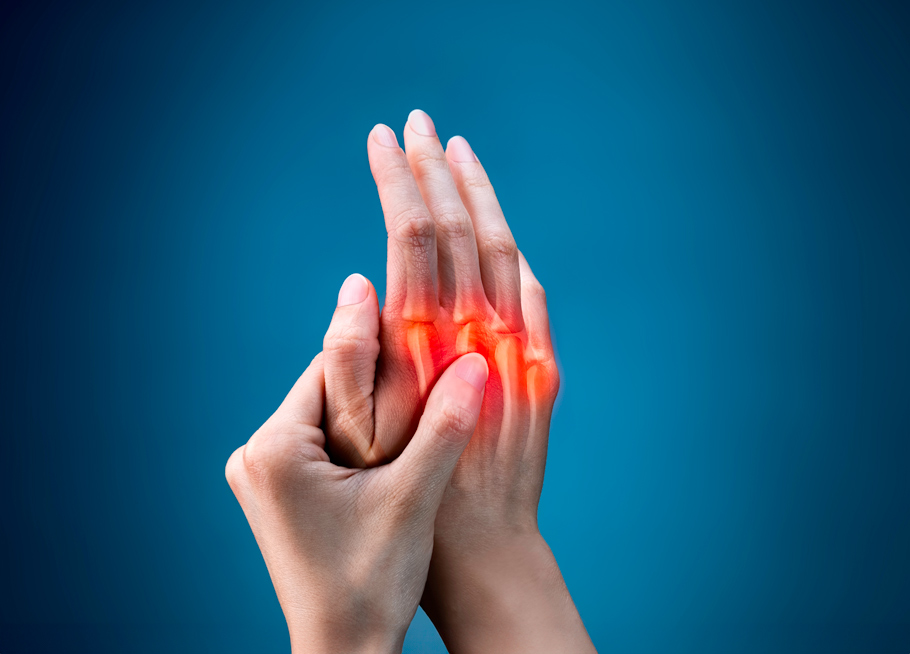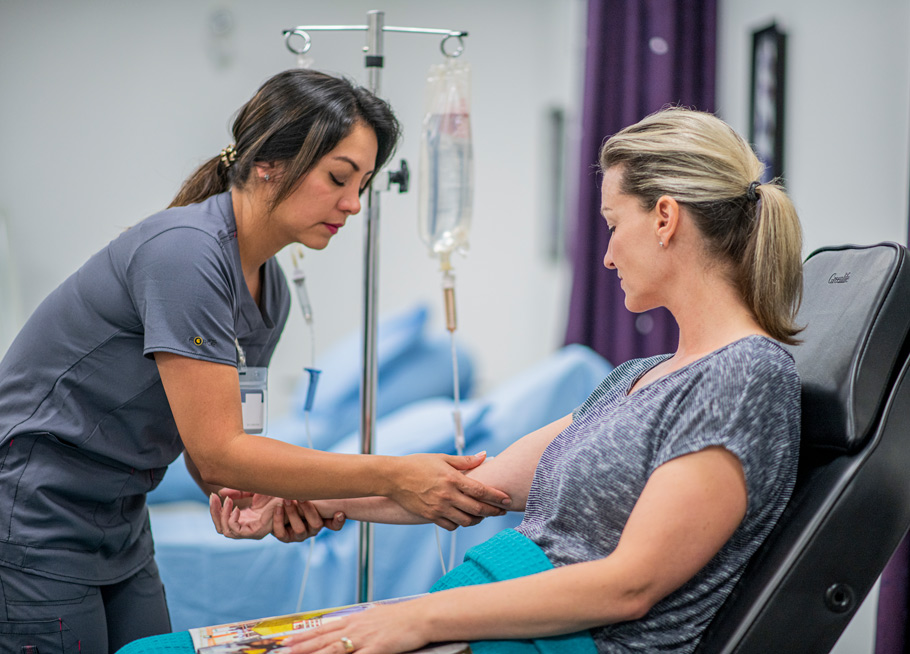
Experiencing swollen joints a distressing symptom of a range of conditions, including rheumatoid arthritis and acute injury. It is often accompanied by pain and restricted movement, and the joints may be warm or tender to the touch.
If you are experiencing this symptom, you may be wondering, ‘what causes my joints to swell?’ Understanding the causes of joint swelling is crucial for effective management and treatment of the issue. Below, we have outlined some of the most common causes. However, this list is not exhaustive and there are many reasons why the joints may swell; therefore it is important not to self-diagnose, and instead seek the expertise of a consultant rheumatologist to get to the root cause.
1. Rheumatoid Arthritis
Rheumatoid arthritis is an autoimmune disorder that can affect any joint in the body. The immune system mistakenly attacks the joints, causing inflammation that results in not only swollen joints, but redness, stiffness, and pain. At first, these symptoms may appear mild and there may be a long time between symptoms, but as the disorder progresses, flare-ups can get worse and more frequent. Flare-ups are most commonly caused by stress, poor sleep, diet, lack of exercise and illness. People with this condition often experience pain in multiple joints.
Dr Naveen Bhadauria, Consultant Rheumatologist says: “There is no cure for rheumatoid arthritis, but treatment options continue to improve, and the condition can be controlled. By diagnosing the disease in its early stages, you can help prevent joint damage and maintain a good quality of life without chronic pain. Treatment may involve anti-rheumatic medicines, biological medicines, steroids, painkillers, physiotherapy and lifestyle changes (such as adopting an anti-inflammatory diet. In severe cases, surgery (such arthroscopy or joint replacement) may be advised.”
2. Osteoarthritis
The most common type of arthritis, osteoarthritis, occurs when the cartilage between bones wears down. As a result, the ends of the bones become less protected, resulting in swelling, pain and stiffness. Osteoarthritis can affect any joint, but the most common are load-bearing joints such as the knees, hips and spine, as well as the joints in the hands. It can be caused by overuse or injury, damage caused by another condition (such as rheumatoid arthritis or gout), age, obesity, and even genetics.
Like rheumatoid arthritis, there’s no cure for osteoarthritis, but you can prevent the condition from getting worse by following a personalised treatment plan that includes pain relief, reducing the strain on joints during everyday activities, targeted physiotherapy, losing weight if you are overweight, and wearing the correct footwear (if the arthritis is present in your load bearing joints). In severe cases, surgery may be recommended to repair or replace the joint.
3. Gout
Gout is a type of arthritis that is caused by the buildup of uric acid crystals in the joint, usually contributed to by a diet high in purines, alcohol consumption and genetic factors. Gout can result in sudden and severe episodes of swelling, pain and redness in the joints. Typically, gout affects the big toe, but it can also affect other joints, including the ankles, knees and wrists.
Gout is usually treated with non-steroidal anti-inflammatories (NSAIDs), such as ibuprofen, or steroids if the pain or swelling does not improve. Gout can come back if the levels of uric acid in your blood rise again. If this is the case, it may be recommended that you take uric acid-lowering medicine.
4. Infection
Viral, bacterial or, more rarely, fungal infections, can cause swelling in the joints. For example, septic arthritis occurs when bacteria invade the joint space, resulting in inflammation and swelling. It is also possible for joints to become arthritic weeks or even months after an infection elsewhere in the body – this is called reactive arthritis.
In many cases, an infection can be treated with a course of antibiotics, which may be administered orally or in the case of serious infections such as septic arthritis, intravenously.
5. Acute Injury
Physical trauma, such as breaks, fractures and sprains, can cause immediate swelling around the affected joint. This is because injuries disrupt the normal structure and function of the joint, triggering the body’s inflammatory response. In these cases, swelling serves as a protective mechanism to stabilise the injured area and facilitate healing.
Treatment depends on the type of injury sustained, and ranges from ice packs and rest, to slings, casts or surgery. Following an injury, swelling may get worse in the days following, and can last as long as a few months. However, the swelling will reduce once the injury begins to heal.
What To Do If You Have Swollen Joints
What you do next will depend on the circumstances surrounding your swollen joints, and additional symptoms.
If you have suffered an injury (that doesn’t require emergency medical attention), and as a result have a swollen joint, in most cases rest and cold compresses can help ease the pain and swelling as the injury heals.
If your swollen joints are accompanied by a fever, you should seek emergency medical help, as it could be that you have an infection which requires immediate attention.
However, if you have swollen joints with an absence of fever and you cannot pinpoint the swelling to an injury, you may consider booking an appointment with a consultant rheumatologist. Your consultant will conduct investigations and assess your symptoms and medical history to get a better picture of your condition before moving forward with a diagnosis and treatment.
Contact Dr Naveen Bhadauria on 0207 126 7264, or use our online booking system.
Article by Dr. Naveen Bhadauria



